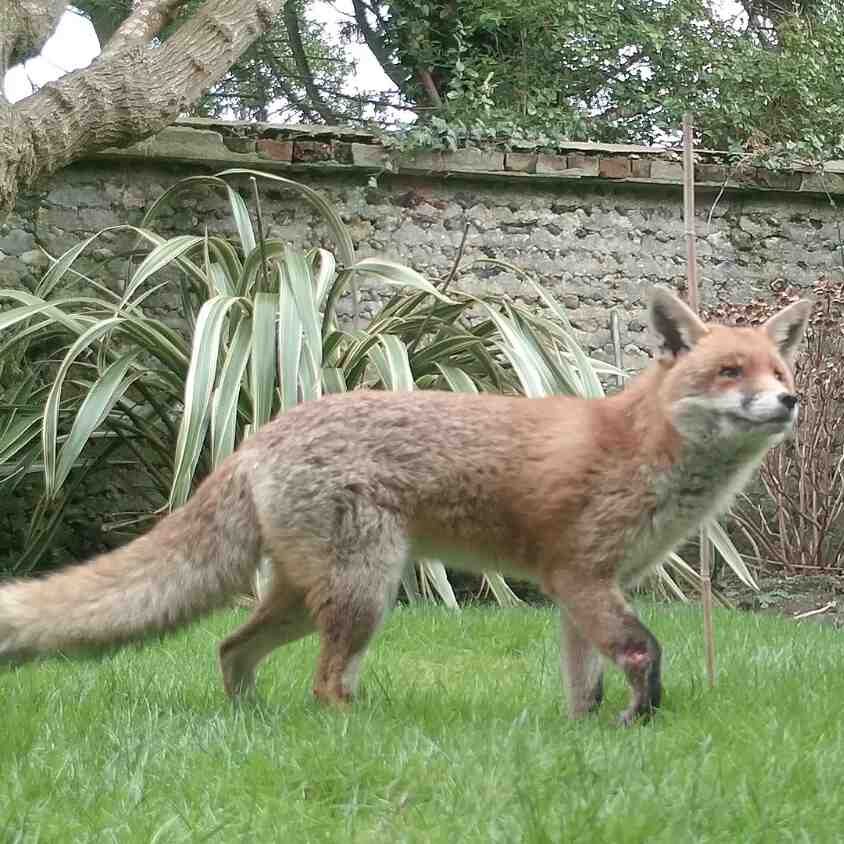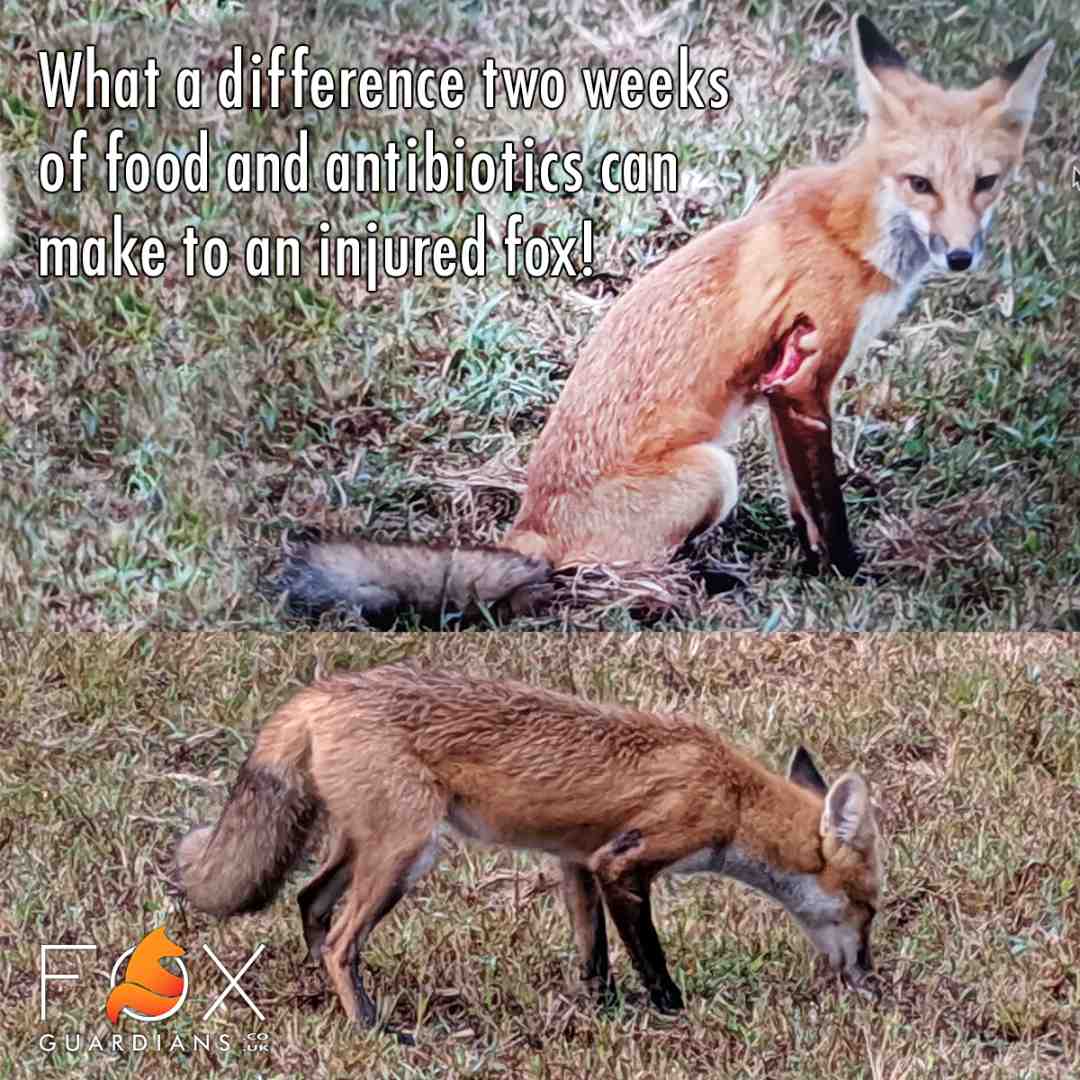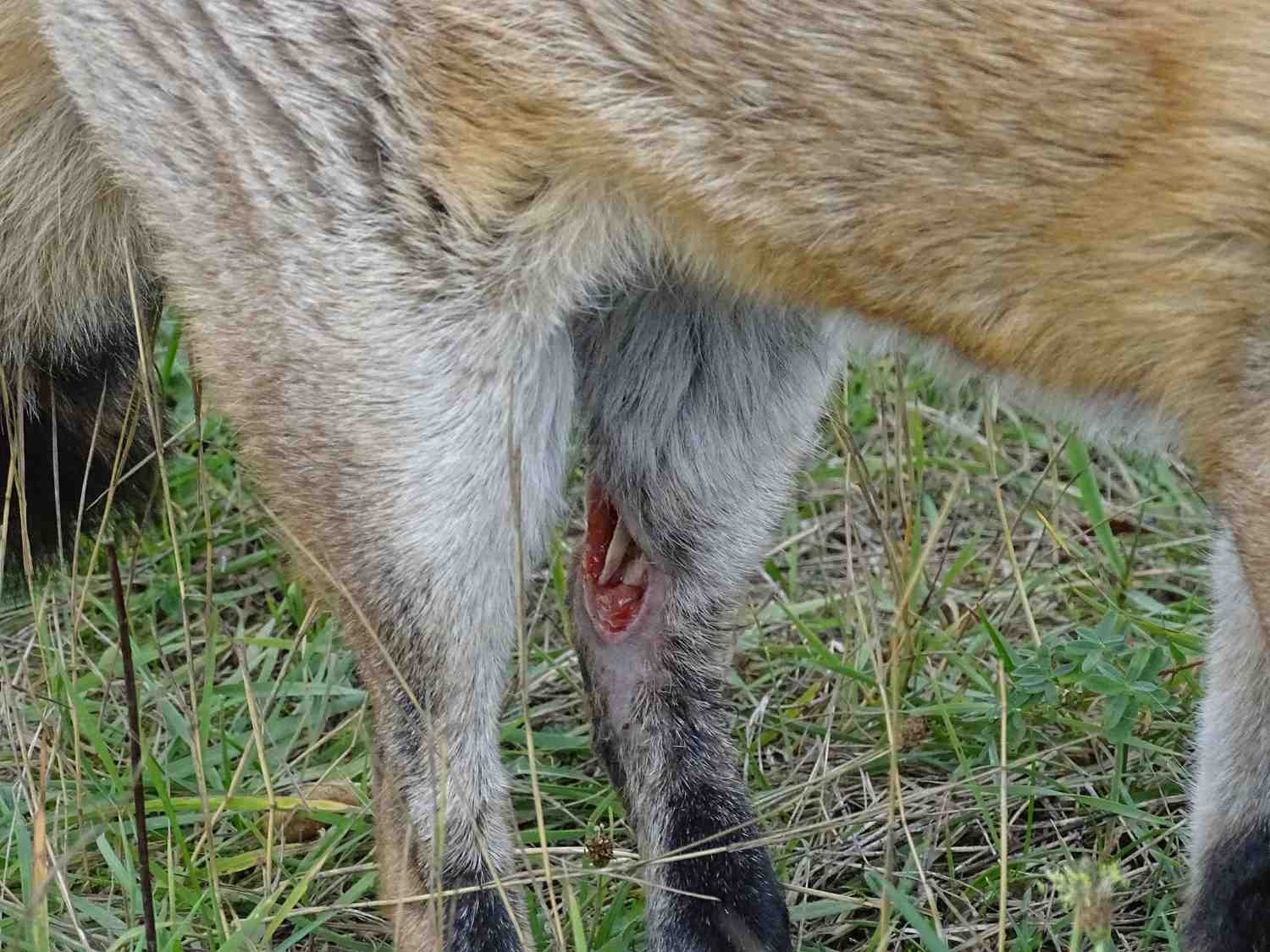How to help an injured fox
If you are in the UK, trying to get help for an injured fox that may need rescuing, please contact your nearest wildlife rescuers. You can find them here: https://helpwildlife.co.uk Take a photo or if possible a video of the animal and send it the rescuers or a vet for their initial assessment. An image really says more than 1000 words and allows a rescuer to quickly appraise how life-threatening the fox’s condition is and how urgently the rescuer has to act.
If you have spotted a fox that may have been run over by the roadside, find a safe space to park up and stay near the fox. Most animal rescuers will not come out unless they can be certain that the fox is still in situ as otherwise their journey may be wasted. It is best not to approach the animal, as they may bolt even though badly injured and then it may be impossible to get the fox the help they need. If the fox feels cornered and threatened, they may also bite to defend themselves. Make yourself small and talk to the fox in a very calm voice and lower your gaze if they look at you, so they know you are not a threat.

If the fox is in your garden, provide water and food and monitor if the fox is eating and drinking. You can also fill a box with straw or some towels so the fox can rest up in comfort. It is best not to try to handle an adult fox by yourself unless you have the necessary equipment and training as even a very poorly fox will try to defend themselves if they feel threatened. If there is a cub without siblings or a mum, do monitor if mum does show up to feed the cub. After the first 4 weeks inside the den when the cubs are completely dependent on mum’s warmth and milk, the vixen will often leave the cubs for extended periods to forage, hunt and rest up. She should return around 4 times a day to nurse the cubs either inside or outside the den, especially at dawn and dusk. If the cub is alone and crying for extended periods, they may be cold and dehydrated and may need rescuing. However you must touch base with a wildlife rescue or local vet and only interfere is you have been advised to do so or it is obvious that this is an emergency (for example of you can see that the cub is injured or literally on their last legs).
If you must handle the cub to take them to a vet, do wear long sleeves and gloves. Pick the cub up by scruffing their neck. Place them in a box with bedding, air holes and a closed lid and drive them to the vet. Note: In spring and early summer most rescue centres are inundated with rescued cubs and quickly run at full capacity, unable to take any more foxes in. Some vets euthanize wildlife if they have no room in their own kennels and there are no spaces for the animals in any rescue centres, even if the animal has a good chance of recovery. Vets are not meant to be doing this but in our experience it sadly does happen. Foxes are resilient and often bounce back in the wild when supported by supplementary feeding, providing shelter and when possible providing medication provided by a vet or rescue organization. Even the foxes with horrific injuries such as the open shoulder and leg wounds as featured in the images on this page, made a full recovery by being given anti-inflammatory and antibiotics in the wild. These foxes were lucky as their guardians on the ground were able to target-feed them and rescue organizations had provided meds because trapping either of these foxes for treatment was not an option.


